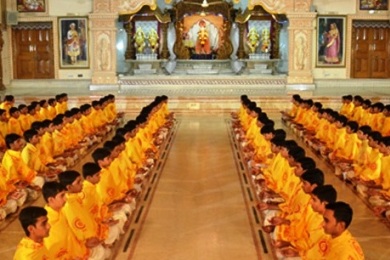The Kilted Heathen
Crow FreyjasmaðR
Recently I've seen the comparison made here, as well as sporadically here and there in the past - mostly by universalists and pantheists - that Asatru and Hinduism share much in common. That because both cultures evolved from Proto-Indo-European peoples, the two religions are "cousins." But is this truly so?
Most of what I have been able to find and/or seen are simplistic comparisons between deities. Shiva - Odin as deities of Death (which certainly simplifies Odin, though I do not know how simplified Shiva - or any Hindu deity - is), Thor - Indra as "thunder gods", Jormungandr to Shesha, who destroys each cycle... All are over-simplified, and rely on a rigid and limited view of the Gods as complex individuals and beings.
Not to mention that core myths and cosmologies are completely different. Radically so.
In the Hindu creation myth, there is the progression as so:
Contrast this to the Norse creation myth, as is follows:
Most comparisons, as mentioned before, seem to rely on nothing more than archetype. The two cultures certainly branched from PIE peoples, but I see nothing to suggest that Germanic paganism - even in the past - has Vedic roots (as was suggested in another thread).
Most of what I have been able to find and/or seen are simplistic comparisons between deities. Shiva - Odin as deities of Death (which certainly simplifies Odin, though I do not know how simplified Shiva - or any Hindu deity - is), Thor - Indra as "thunder gods", Jormungandr to Shesha, who destroys each cycle... All are over-simplified, and rely on a rigid and limited view of the Gods as complex individuals and beings.
Not to mention that core myths and cosmologies are completely different. Radically so.
In the Hindu creation myth, there is the progression as so:
- Nothingness save Vishnu on a cobra
- Dawn and the introduction of Brahma
- Brahma - at Vishnu's command - creates the earth, heavens, and skies with three parts of the lotus
- Brahma creates life on earth.
Contrast this to the Norse creation myth, as is follows:
- Muspelheim to the South, Niflheim to the North, Ginnungagap (nothingness) in between.
- Muspelheim and Niflheim clash, creating vast fields of glaciers and fog
- The being Ymir is born of this clash, as is Audhumla and Buri
- Giants are born of Ymir, and Odin, Vili and Ve born of Borr - the son of Buri - and Bestla
- To create life, and all that is, Odin, Vili and Ve slay Ymir, and form the world from it's corpse; Ymir's blood floods out, drowning many giants and forming the oceans.
- Of Ymir's bones are made stones, of their hair trees and grass, of their skull is the sky dome, and clouds are their brain.
- Driftwood of ash and elm are given life and being, and carved into man and woman by the three brothers.
Most comparisons, as mentioned before, seem to rely on nothing more than archetype. The two cultures certainly branched from PIE peoples, but I see nothing to suggest that Germanic paganism - even in the past - has Vedic roots (as was suggested in another thread).


